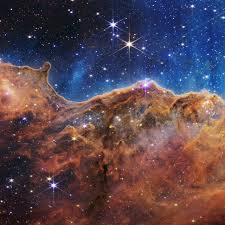The Vast Unknown: Deep Space Exploration
Deep space, the final frontier that beckons humanity with its mysteries and wonders. Stretching beyond our solar system, deep space is a vast expanse filled with celestial bodies, dark matter, and uncharted territories waiting to be discovered.
The Infinity of Space
When we gaze up at the night sky, we see a mere fraction of what lies beyond. Deep space extends far beyond the reaches of our telescopes and probes, encompassing billions of galaxies each containing billions of stars. The sheer scale of deep space is both humbling and awe-inspiring.
Exploring the Unknown
Humanity has long been fascinated by the mysteries of deep space. Through advancements in technology and space exploration, we have been able to send probes and telescopes to capture images and data from distant corners of the universe. These missions have revealed stunning phenomena such as black holes, supernovae, and exoplanets.
The Search for Extraterrestrial Life
One of the most compelling reasons for exploring deep space is the search for extraterrestrial life. Scientists are actively studying planets within habitable zones of distant stars to determine if conditions exist that could support life as we know it. The discovery of even microbial life beyond Earth would have profound implications for our understanding of the universe.
The Future of Deep Space Exploration
As technology continues to advance, so too does our ability to explore deeper into space. Plans for manned missions to Mars, robotic probes to outer planets, and telescopes capable of peering deeper into the cosmos are all on the horizon. The future holds endless possibilities for unlocking the secrets hidden within deep space.
In Conclusion
Deep space remains a realm ripe with discovery and wonder. As we continue to push the boundaries of exploration, we inch closer to unraveling the mysteries that lie beyond our own little corner of the galaxy. The journey into deep space is one that promises not just scientific knowledge but also a deeper understanding of our place in this vast universe.
Exploring the Vast Unknown: Key Questions About Deep Space Unveiled
- What is deep space?
- How big is deep space?
- What is the farthest object in deep space that we have discovered?
- Are there other galaxies in deep space besides our own Milky Way?
- Is there a possibility of finding extraterrestrial life in deep space?
What is deep space?
Deep space refers to the vast, seemingly infinite expanse beyond our solar system where the influence of our sun and planets diminishes, giving way to a realm of cosmic wonders. It is a region where celestial bodies, such as stars, galaxies, nebulae, and black holes, populate the darkness, offering a glimpse into the immense scale and diversity of the universe. Deep space captivates our imagination with its mysteries and beckons exploration to uncover the secrets hidden within its depths.
How big is deep space?
The vastness of deep space is a question that often leaves us in awe of its sheer scale. Deep space extends far beyond our comprehension, encompassing an unimaginable expanse that stretches beyond the boundaries of our known universe. The size of deep space is truly mind-boggling, with distances measured in light-years and galaxies spanning billions of light-years apart. To quantify the exact size of deep space is a challenge that highlights the boundless nature of our universe and the infinite possibilities that lie within its uncharted territories.
What is the farthest object in deep space that we have discovered?
The question of the farthest object in deep space that we have discovered is a captivating inquiry that showcases humanity’s relentless pursuit of knowledge beyond our own cosmic neighborhood. As of now, the farthest object known to us is a galaxy named GN-z11, located approximately 13.4 billion light-years away from Earth. This distant galaxy offers a glimpse into the early universe, allowing scientists to study the conditions and evolution of galaxies when the cosmos was still in its infancy. The discovery of GN-z11 highlights the remarkable advancements in astronomy and technology that enable us to peer deeper into the vast expanse of deep space and unravel its enigmatic secrets.
Are there other galaxies in deep space besides our own Milky Way?
In the vast expanse of deep space, beyond our own Milky Way galaxy, lie countless other galaxies waiting to be discovered. The universe is teeming with galaxies of various shapes, sizes, and compositions, each containing billions of stars and planetary systems. Through the lens of powerful telescopes and space probes, astronomers have observed and cataloged a diverse array of galaxies, from spiral galaxies like Andromeda to elliptical galaxies like M87. The existence of these distant galaxies serves as a reminder of the boundless wonders that await exploration in the depths of space.
Is there a possibility of finding extraterrestrial life in deep space?
The question of whether extraterrestrial life exists in deep space is a topic that has captivated scientists and enthusiasts alike for centuries. While definitive proof of alien life remains elusive, the vastness of deep space and the sheer number of planets and galaxies make the possibility intriguing. Scientists are actively searching for signs of microbial or intelligent life on exoplanets within habitable zones of distant stars, using advanced telescopes and probes. The discovery of extraterrestrial life would not only revolutionize our understanding of biology but also challenge our perspectives on the uniqueness of life on Earth.

